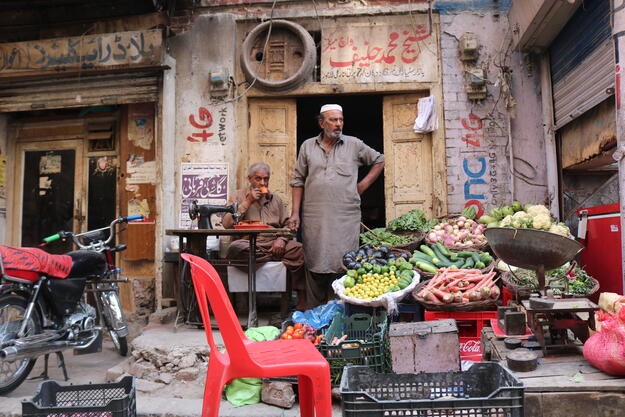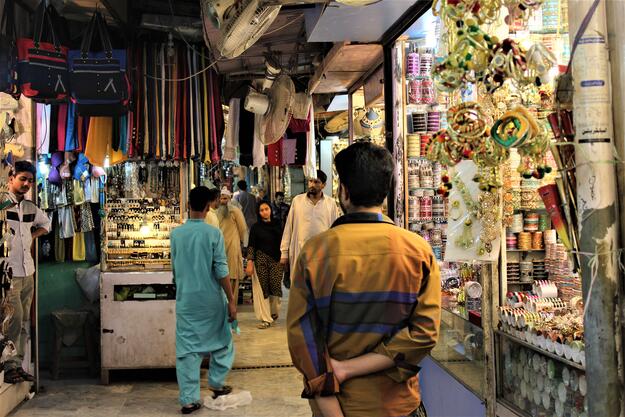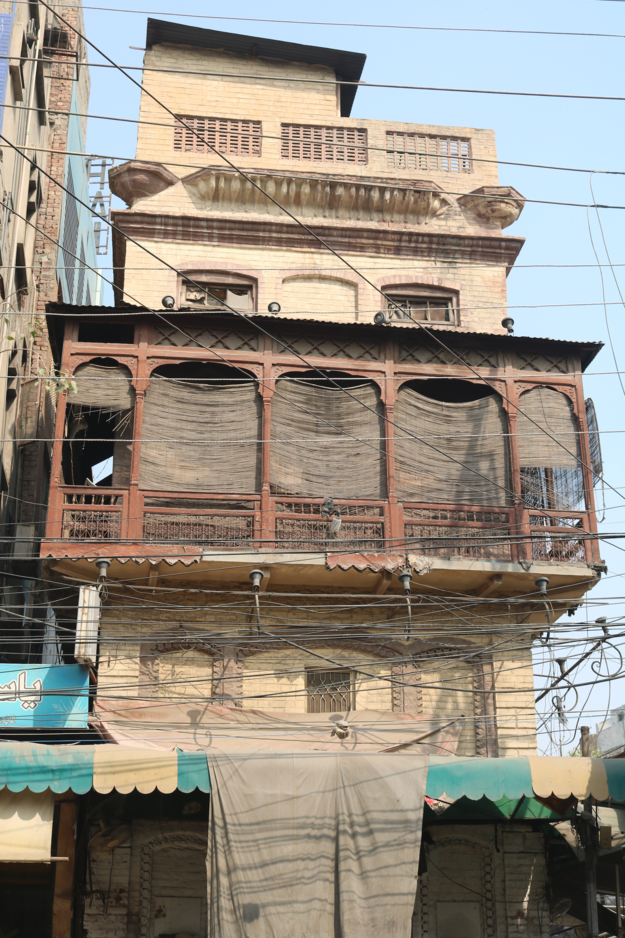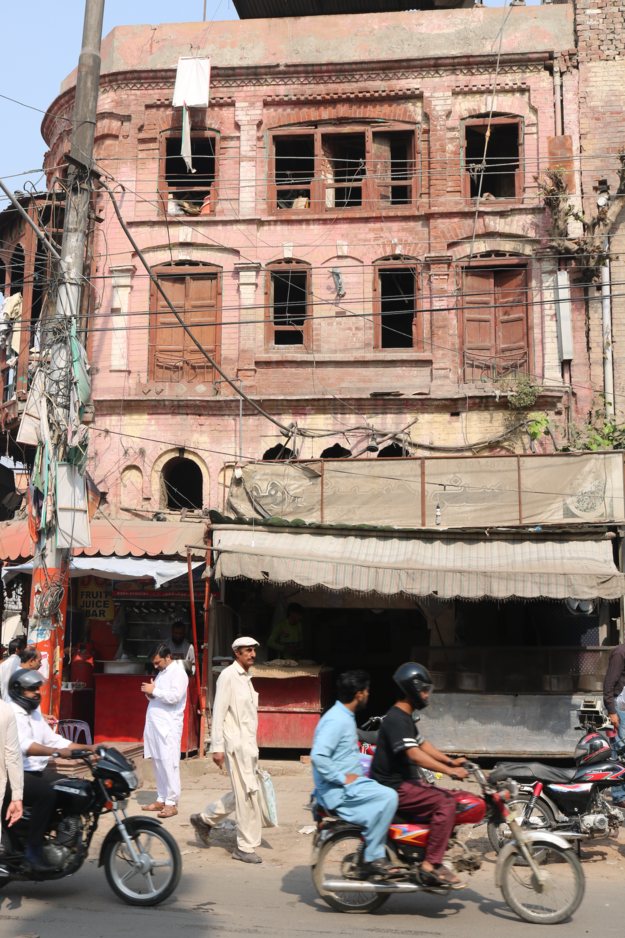Anarkali Bazaar
A Historic Urban Neighborhood
Outside the Walled City of Lahore lies the historic urban neighborhood of Anarkali—a word for the blossom of pomegranate trees, and the name of a fabled lover of the Mughal Emperor. The area extends south from the Lohari Gate of the old Walled City to across the British-era Mall, a wide, tree-lined boulevard. “Anarkali Bazaar,” as the neighborhood is known, has many faces, containing within it a lively market, a dense residential zone, and public buildings from the colonial period, including Lahore Museum and several universities. It was to this area that the British administrators were drawn after Lahore and the Punjab became part of British India. Partition of British India and the creation of Pakistan in 1947 saw Lahore lose its historic Hindu and Sikh population and gain new Muslim inhabitants seeking to make a new life under independence.
Cultural Mapping and Preservation Planning
From shortly after Partition until now the population of Lahore has increased tenfold, from one million to more than ten million people. Rapid urbanization has brought the residents of Anarkali Bazaar face to face with congestion, the loss of shared spaces, and the neglect and degradation of the historic built environment in their neighborhood. A new project now proposes to identify and recapture culturally meaningful shared spaces through a participatory effort, based on a commitment to direct engagement with local community members. With the help of students from the nearby National College of Arts, local planners will use the methods of cultural mapping to help make the case that cultural heritage is not limited to historic buildings and traditional crafts, but encompasses local history, cultural memory, and enduring spatial patterns.
2020 World Monuments Watch
Inclusion of Anarkali Bazaar on the 2020 World Monuments Watch seeks to support these efforts to revive the area and restore the community’s places of meaning. In late 2020, WMF joined local actors in the project to recapture Anarlaki Bazaar's traditional built fabric through cultural mapping and stakeholder engagement, raising awareness of the neighborhood's significance and bringing communities together in the creation of a comprehensive Heritage Trail.




